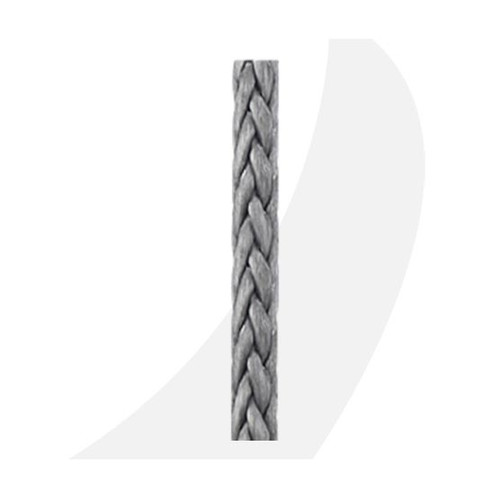Manufacturer part #: STS Heat Set Dyneema 7mm
| Diameter | Weight | Avg. Breaking Strength | |||
|---|---|---|---|---|---|
| American | Metric | lbs./100 ft. | g/m | American | Metric |
| 1/8" | 3 mm | 0.6 lb | 8.9 g | 5.200 lb | 2,358 kg |
| 3/16" | 5 mm | 1.3 lb | 19.3 g | 9,.000 lb | 4,082 kg |
| 1/4" | 6 mm | 1.7 lb | 25.3 g | 12,385 lb | 5,618 kg |
| 9/32" | 7 mm | 2.5 lb | 27 g | 23,600 lb | 7,195 kg |
| 3/8" | 9 mm | 3.95 lb | 29 g | 43,675 lb | 13,315 kg |
Manufacturer part #: STS Heat Set Dyneema 7mm
The rope made of HMPE (high modulus polyethylene) fibers is heat-treated, under tension, at temperatures greater than 100 C / 212 F. At a microscopic level, this process causes the molecular chains to be oriented such that they are linear, thus ensuring greater load bearing capacity. The STS process under exposure to heat increases the rope's breaking strength by achieving a uniform distribution of the HMPE fi ber lengths throughout the rope's longitudinal profile.
Features
- Higher Breaking Strength at same Diameter
- Same breaking strength at smaller diameter and less weight
- Low Constructional Elongation
- Longer Service Life due to closed rope structure, even with a cover
- Stable Rope Cross-Section
The STS Technology
- The rope made of HMPE (high modulus polyethylene) fibers is heat- treated, under tension, at temperatures greater than 100å¡C / 212å¡F.
- At a microscopic level, this process causes the molecular chains to be oriented such that they are linear, thus ensuring greater load bearing capacity.
- The STS process under exposure to heat increases the rope's breaking strength by achieving a uniform distribution of the HMPE fiber lengths throughout the rope's longitudinal profile.
Advantages Of A Rope With STS Technology
- Higher breaking strength at same diameter
- Same breaking strength at smaller diameter and less weight
- Low constructional elongation
- Longer service life due to closed rope structure, even without cover
- Stable rope cross-section
Advantages Of The STS Technology
TEUFELBERGER STS ropes are constructed using a precisely controlled process which utilizes the ideal balance of temperature and tensioning thanks to:
- Uniform tension
- Uniform heating
- Minimized rotation of the rope during the process
- Uniform fiber lengths
in the rope's longitudinal profile
- Molecular chains are oriented in the direction of the force
- Improved degree of utilization of the fibers contained in the rope
- Higher breaking strength
- Stable rope cross-section
- Closed rope structure














